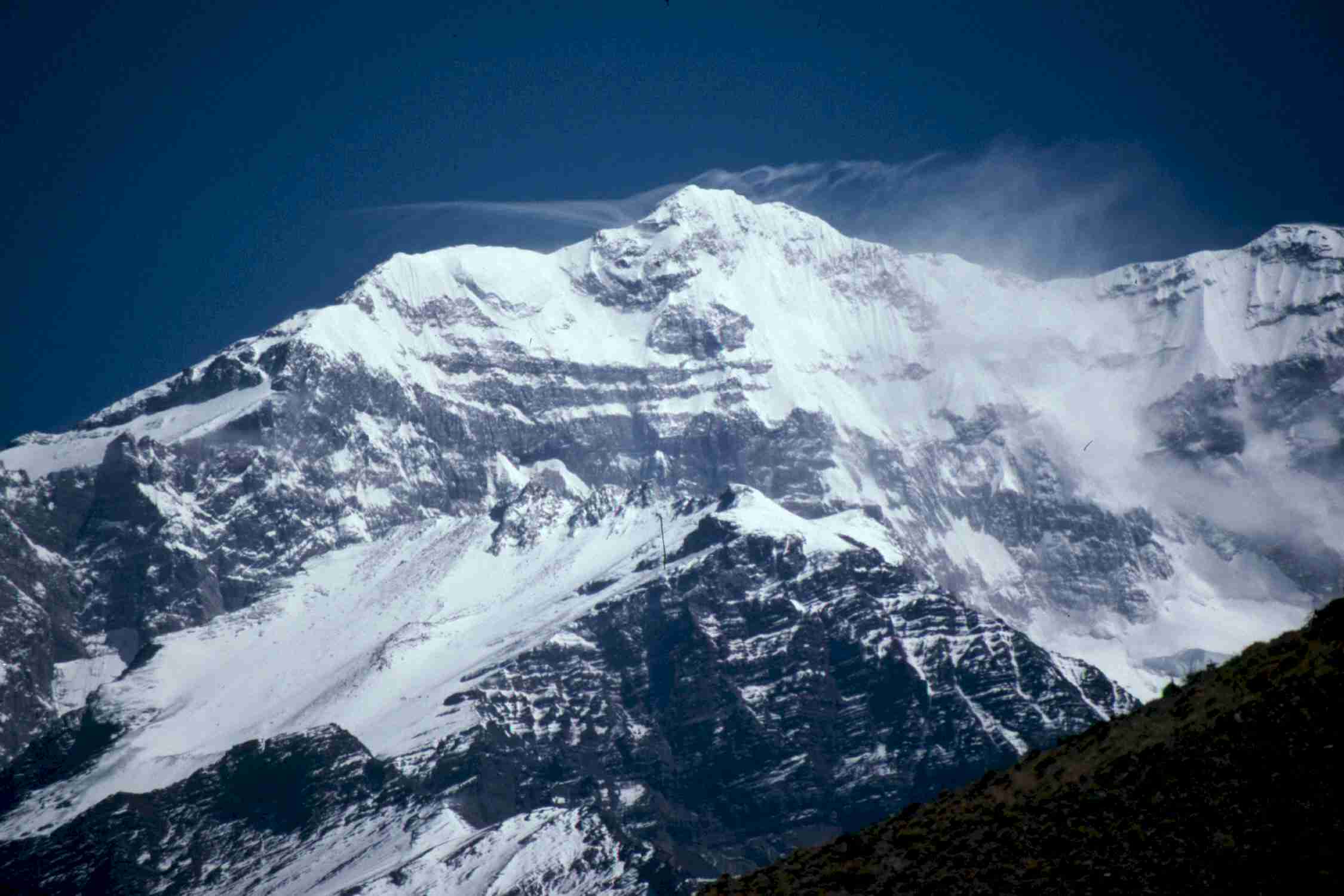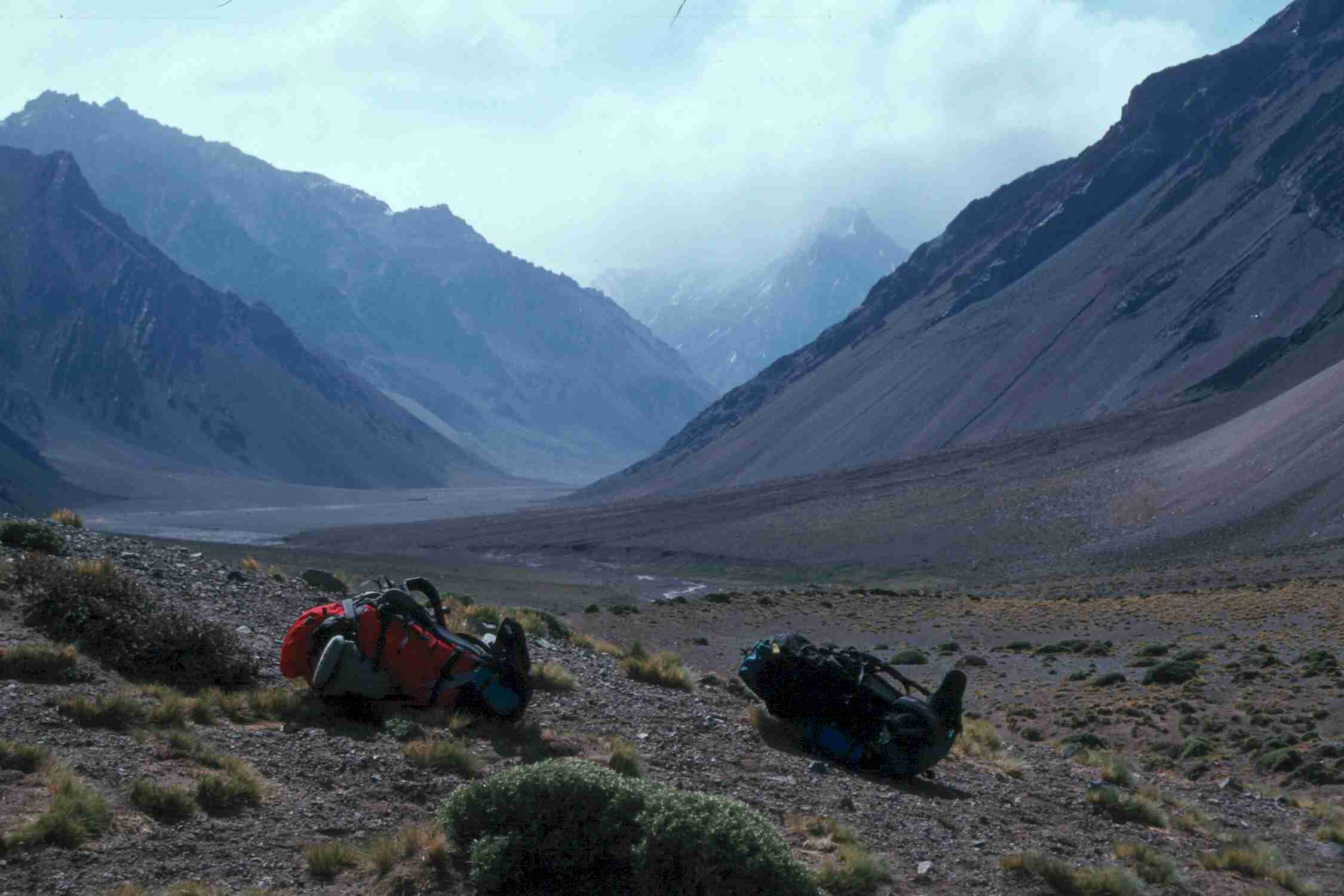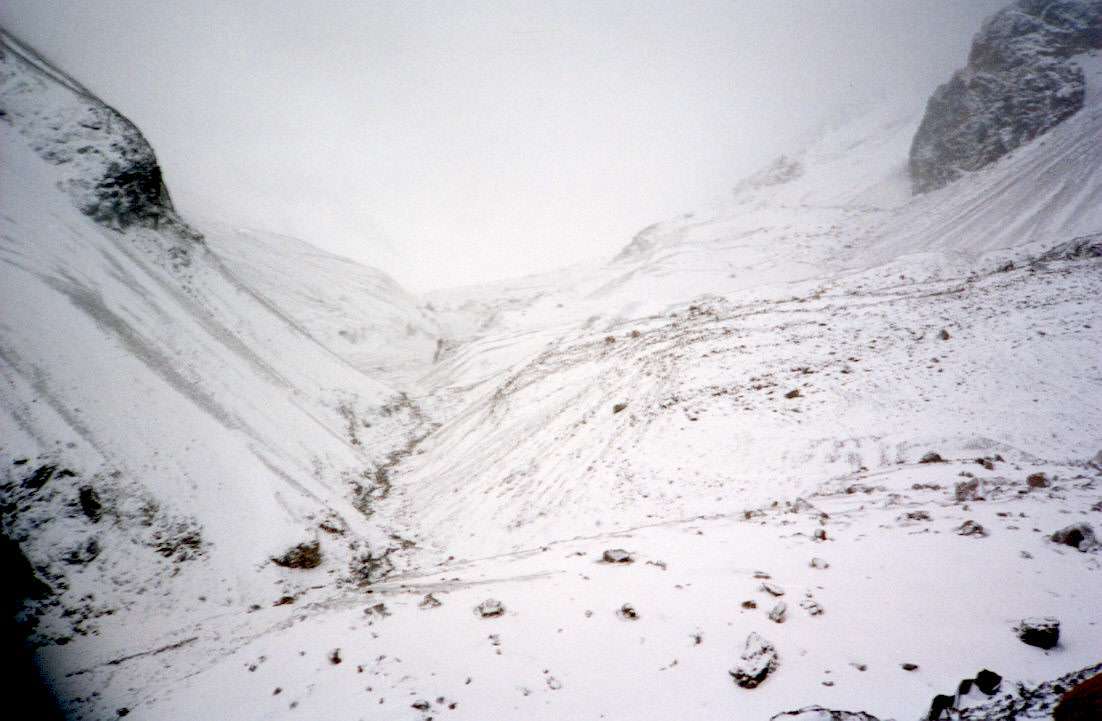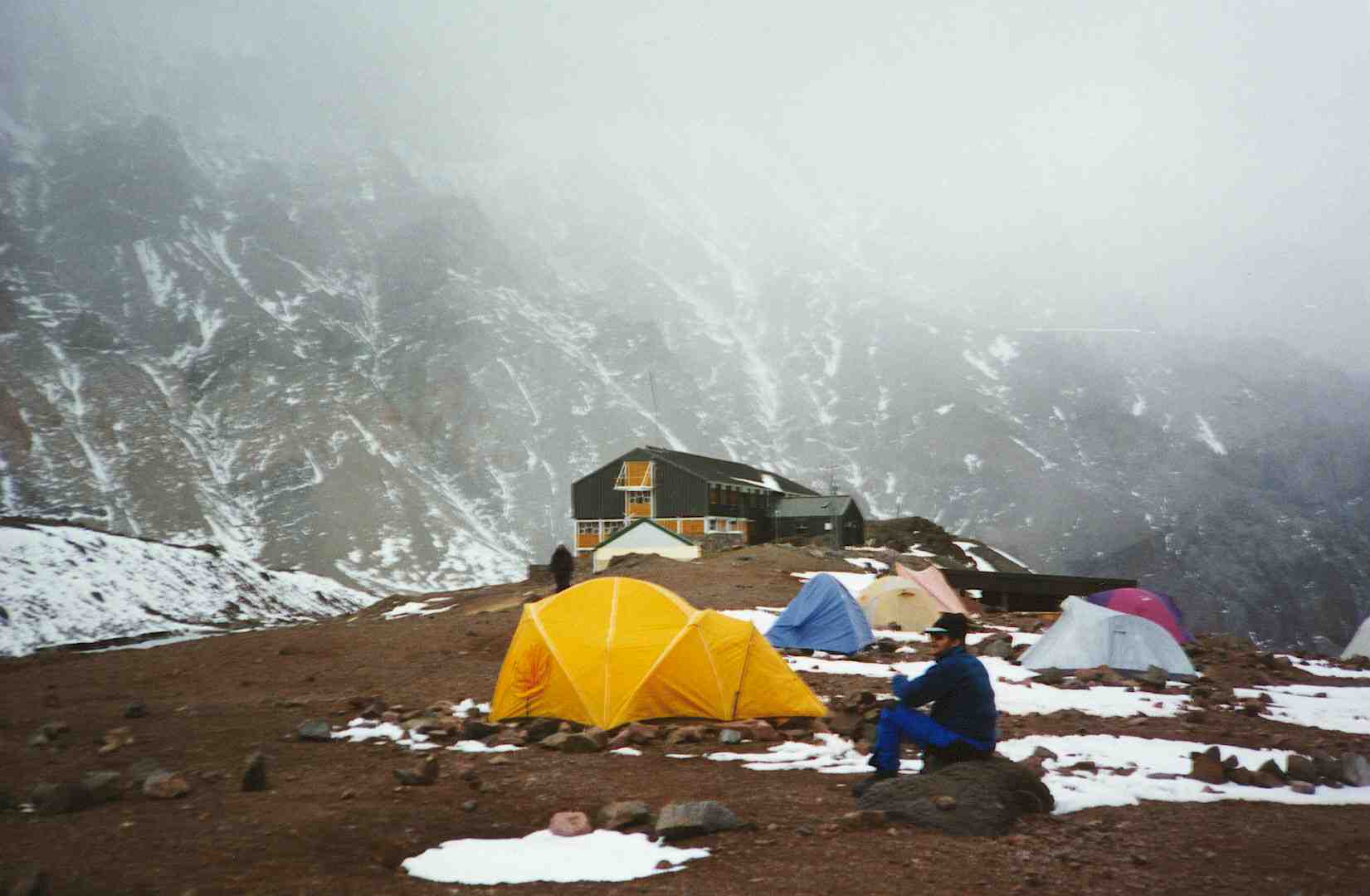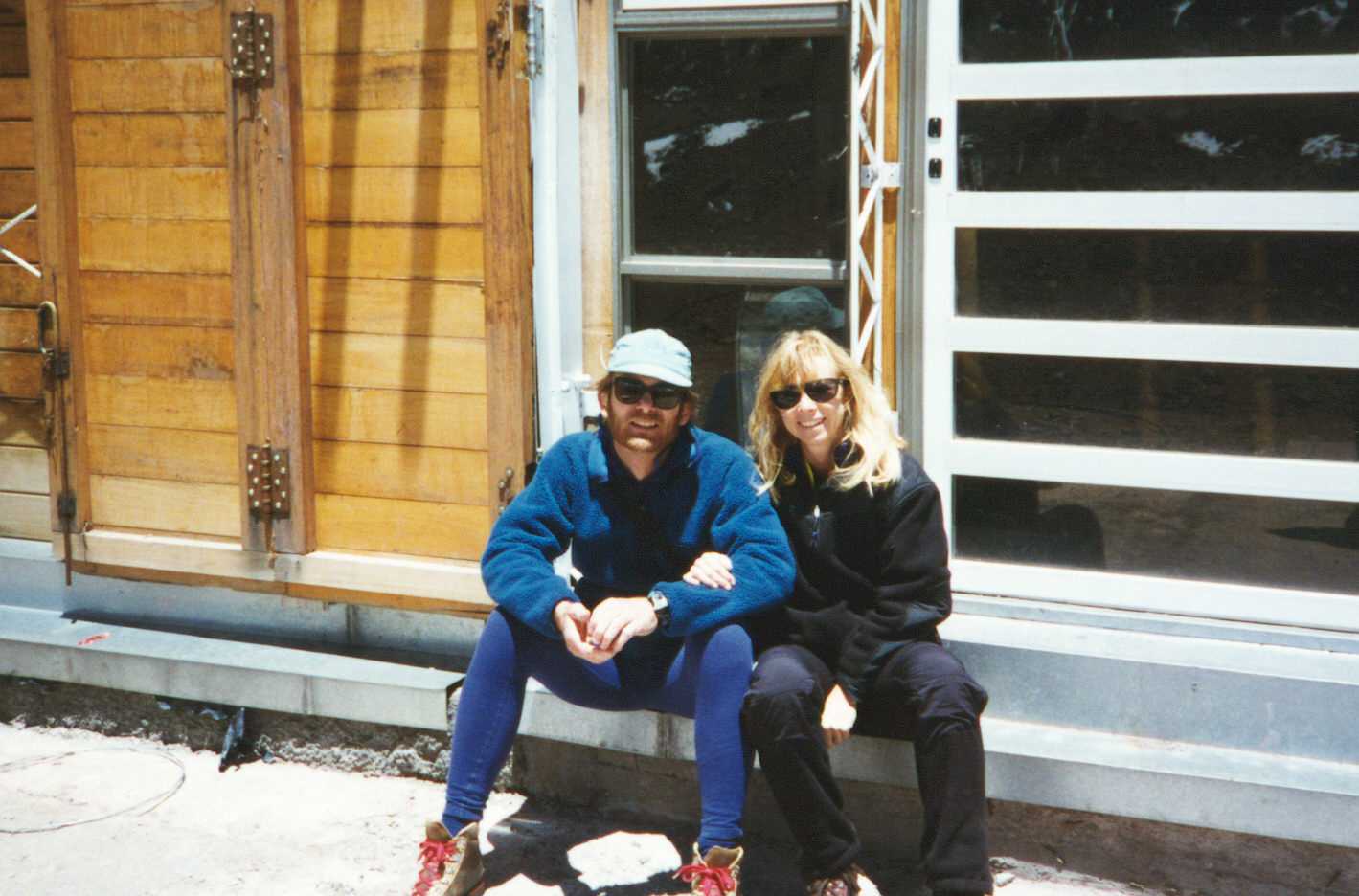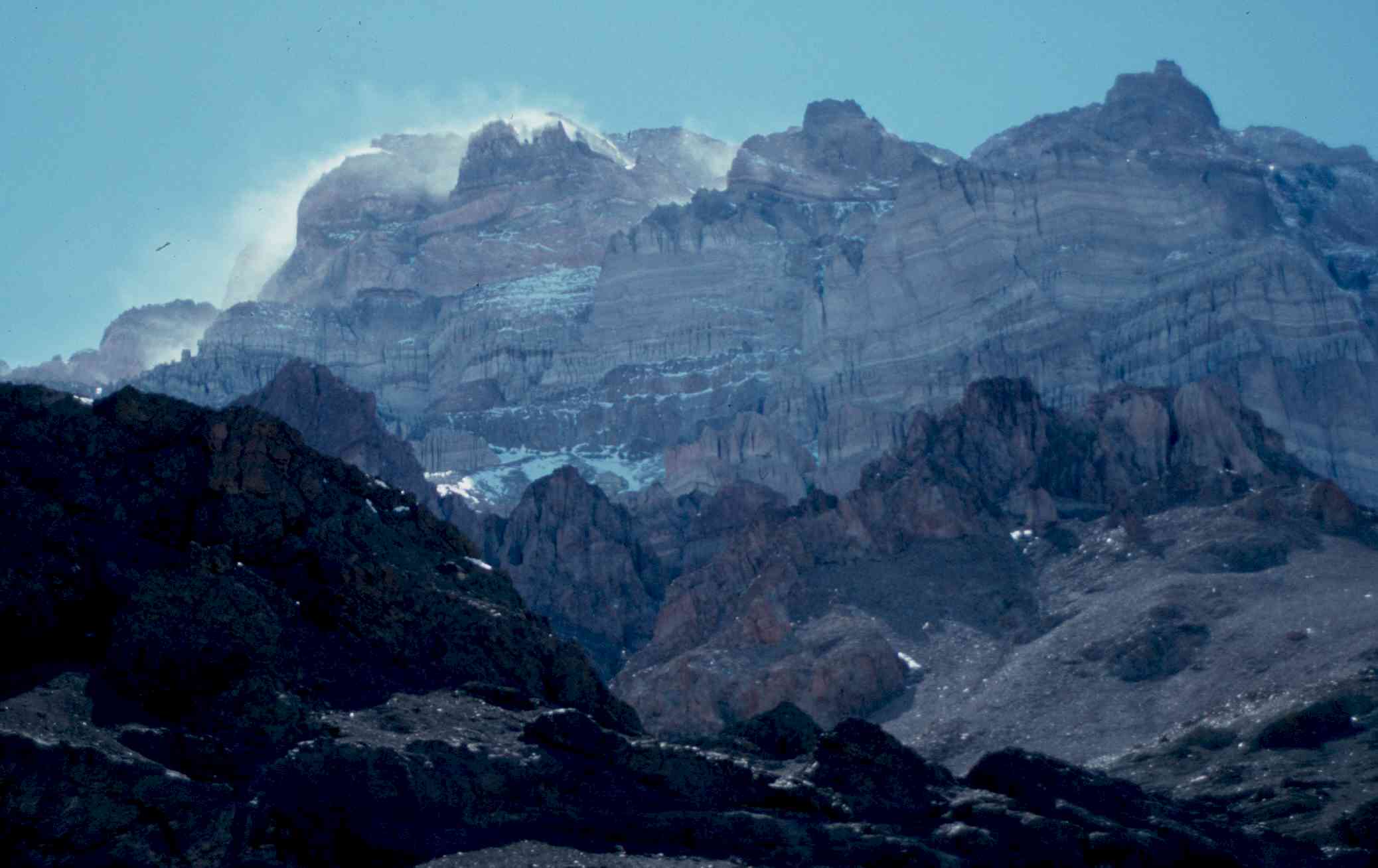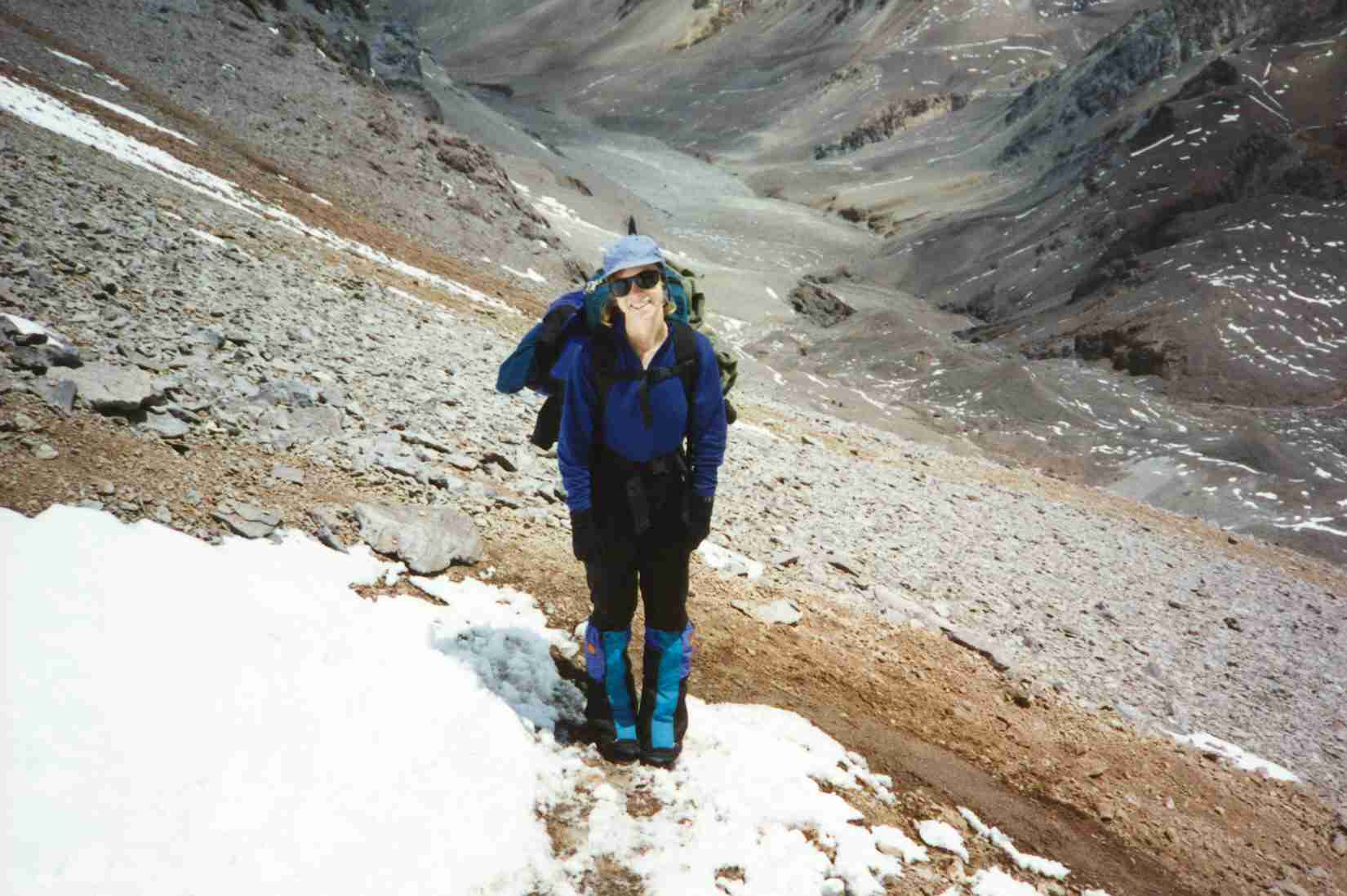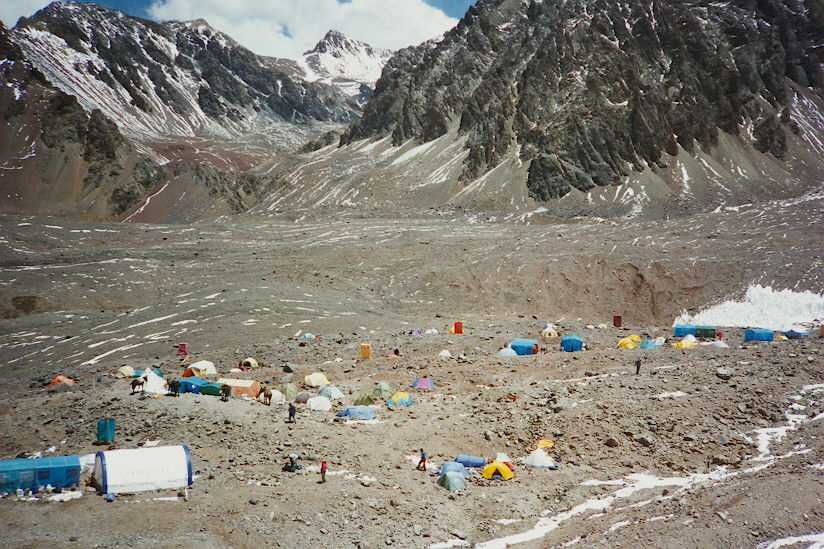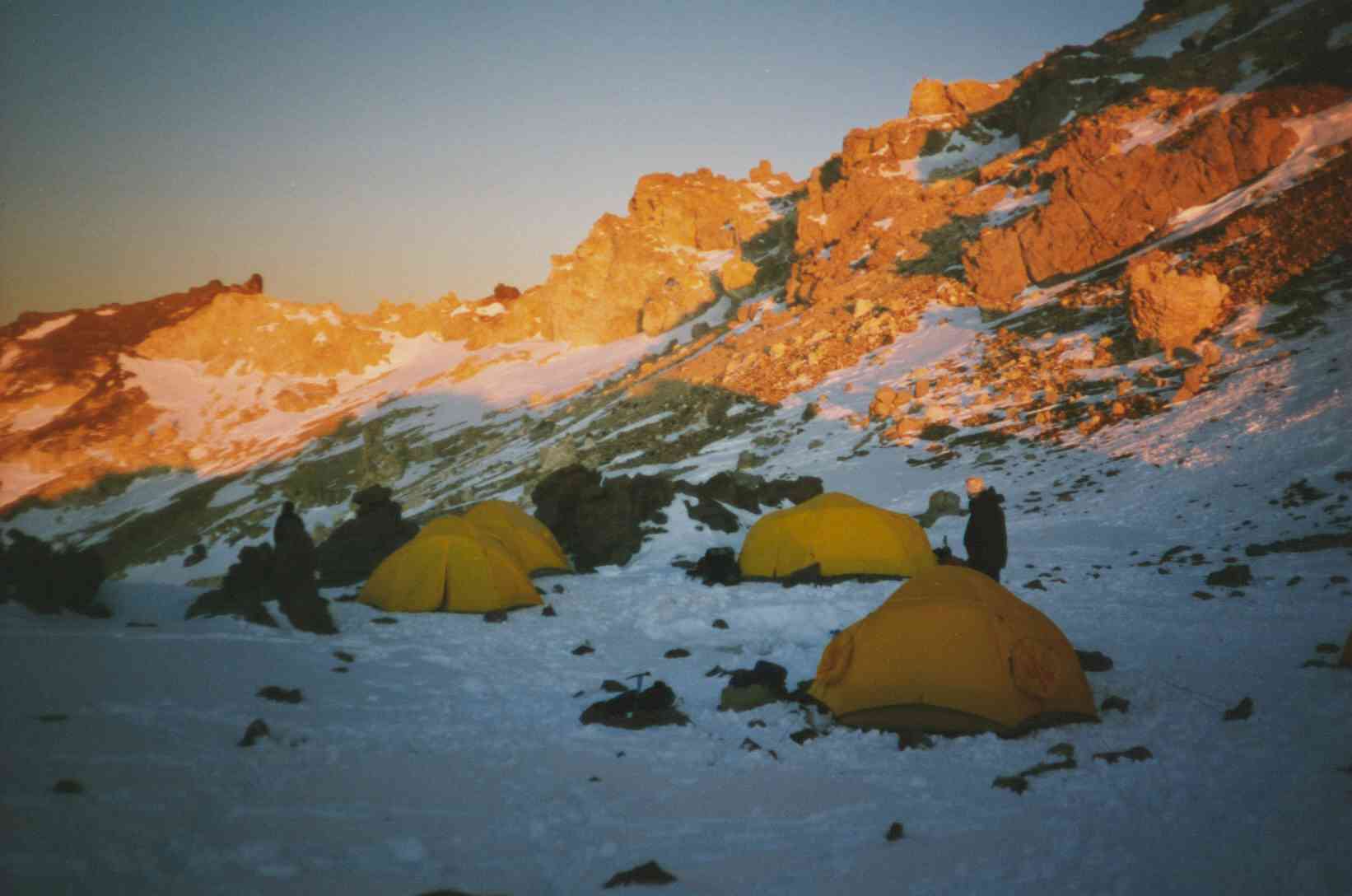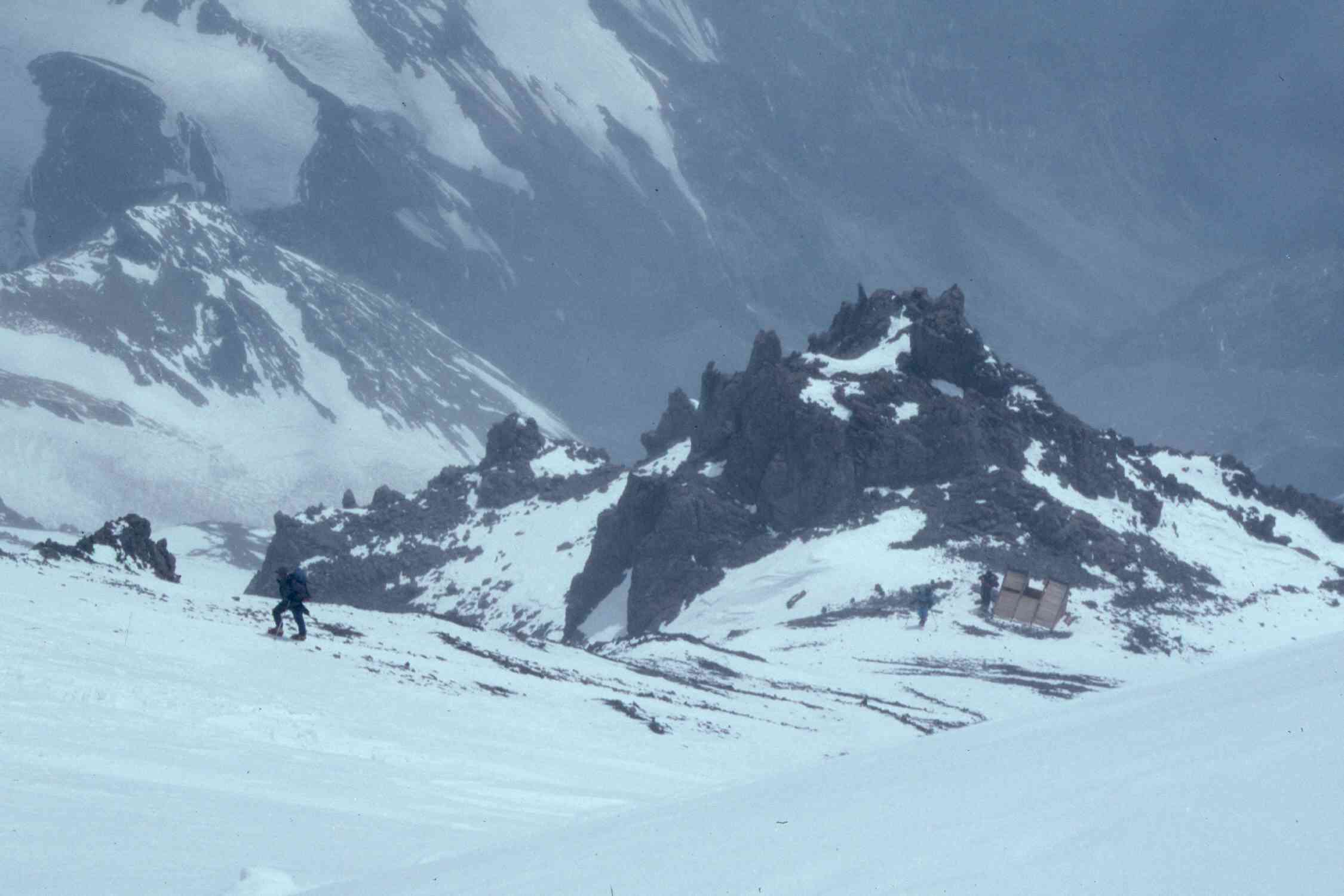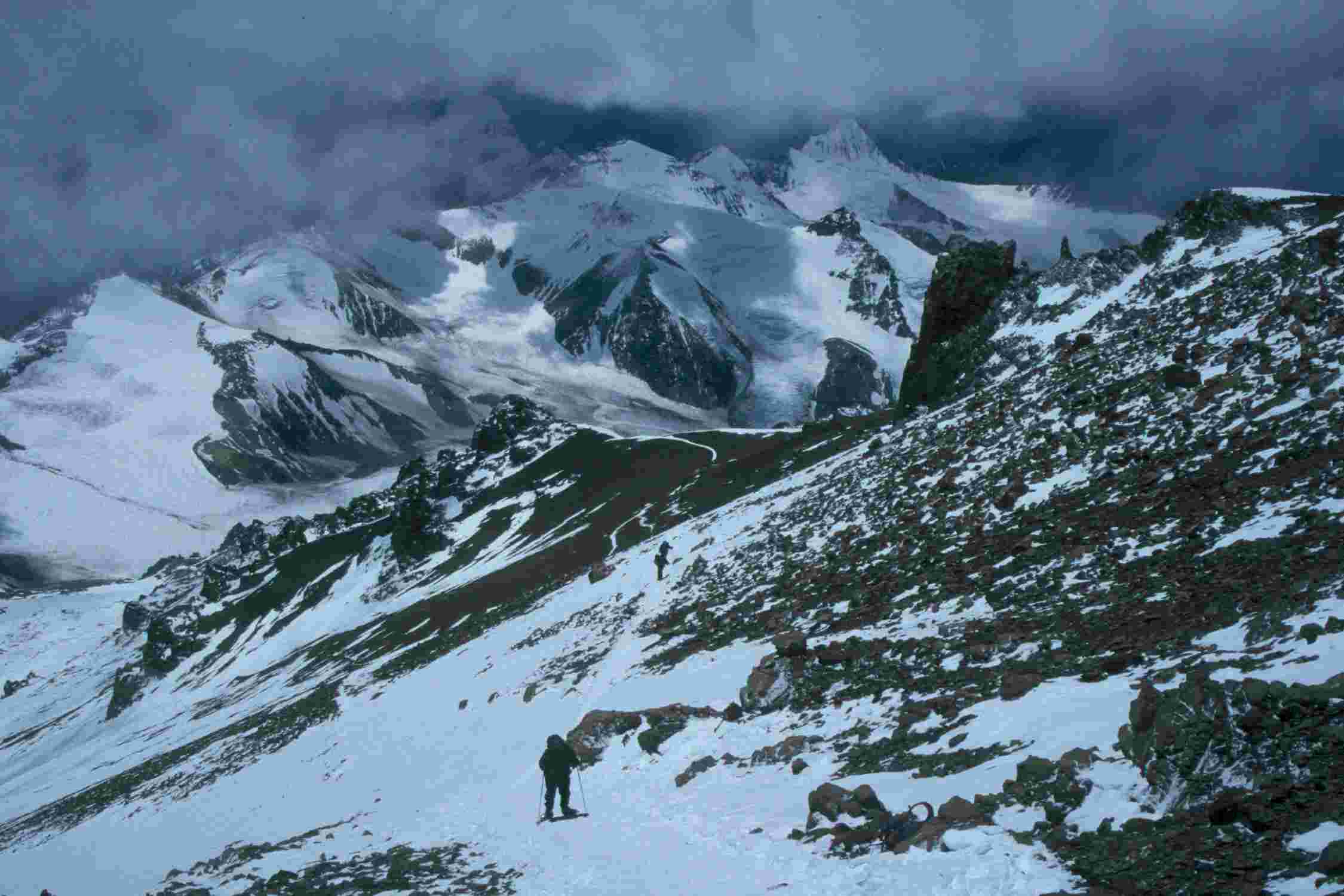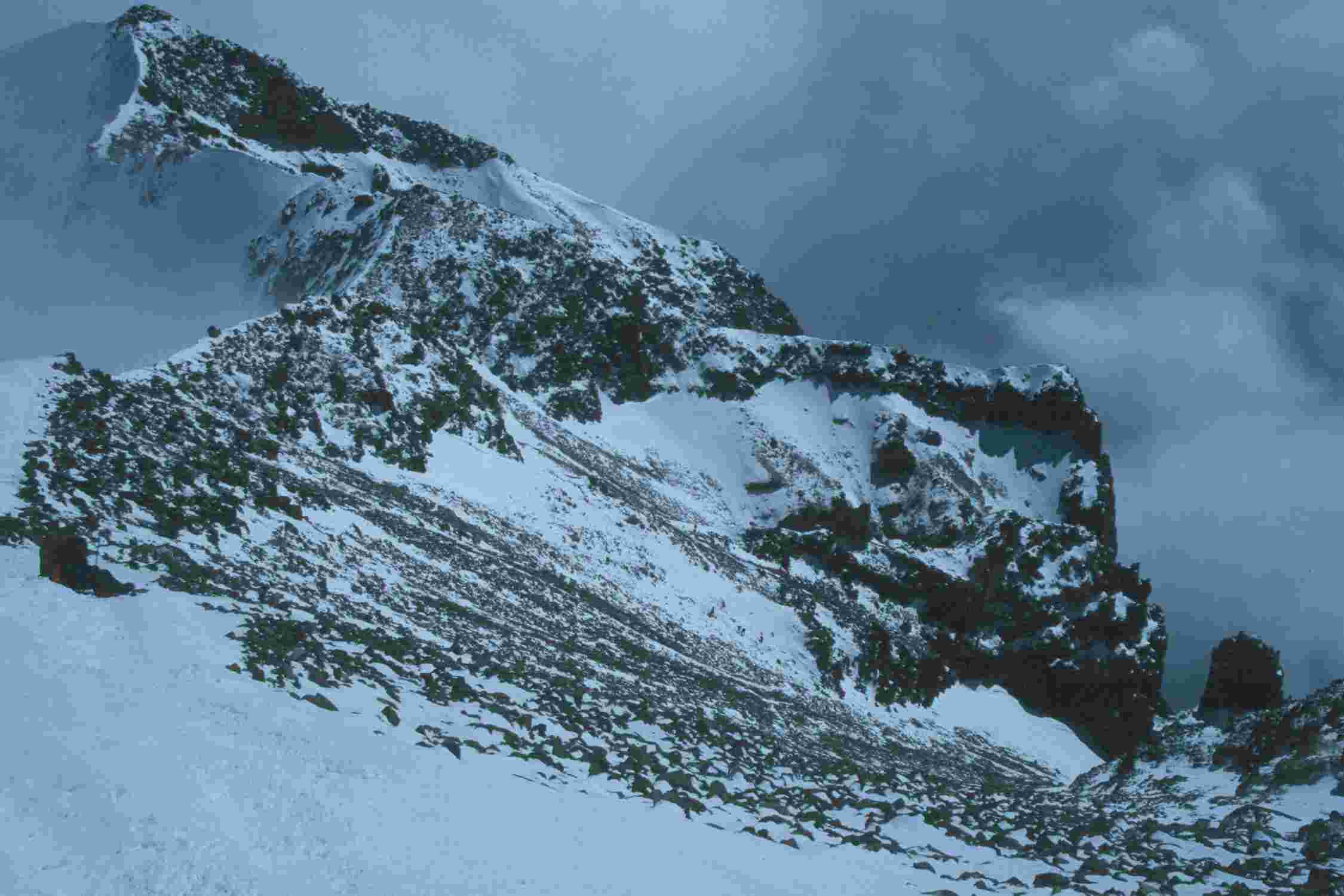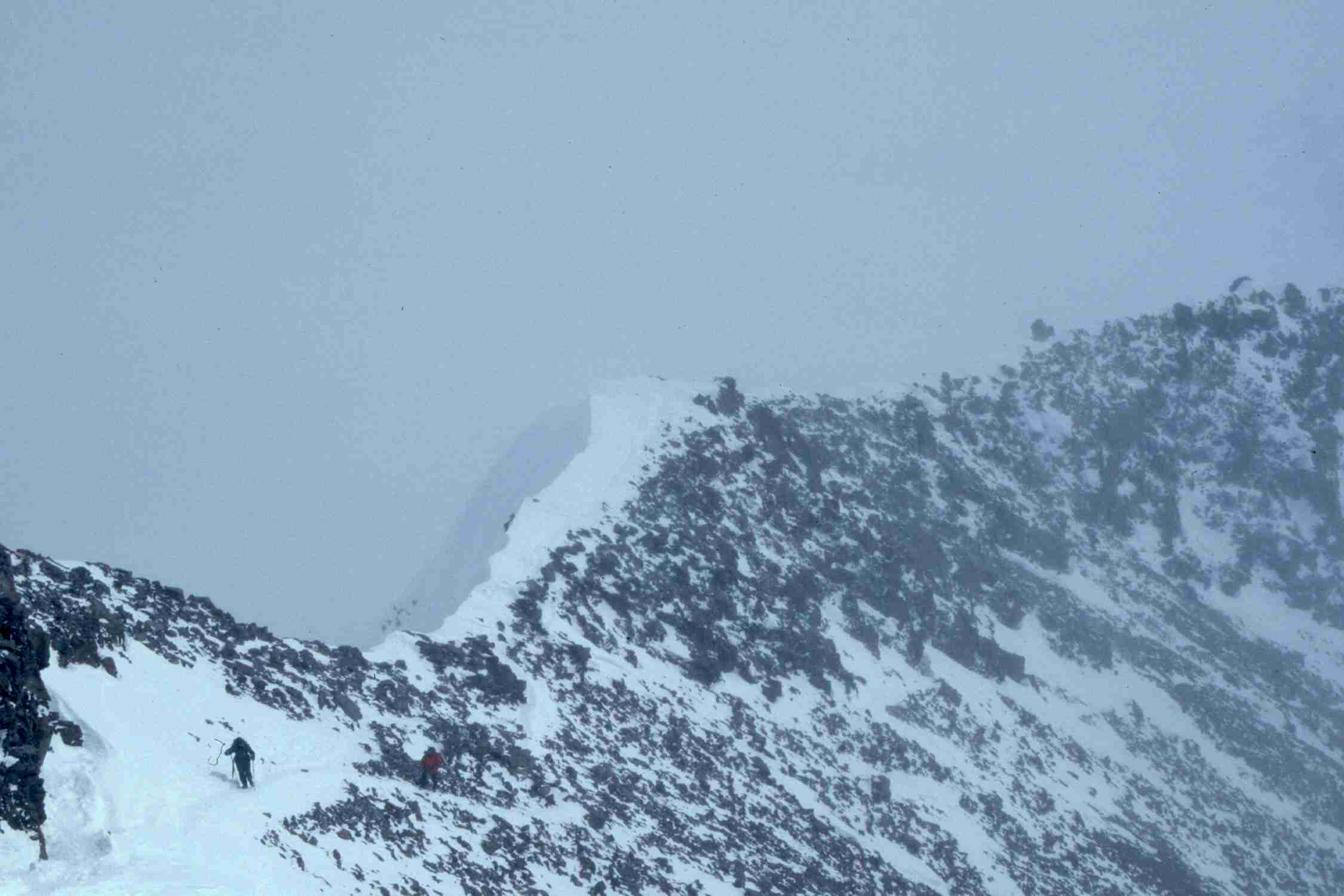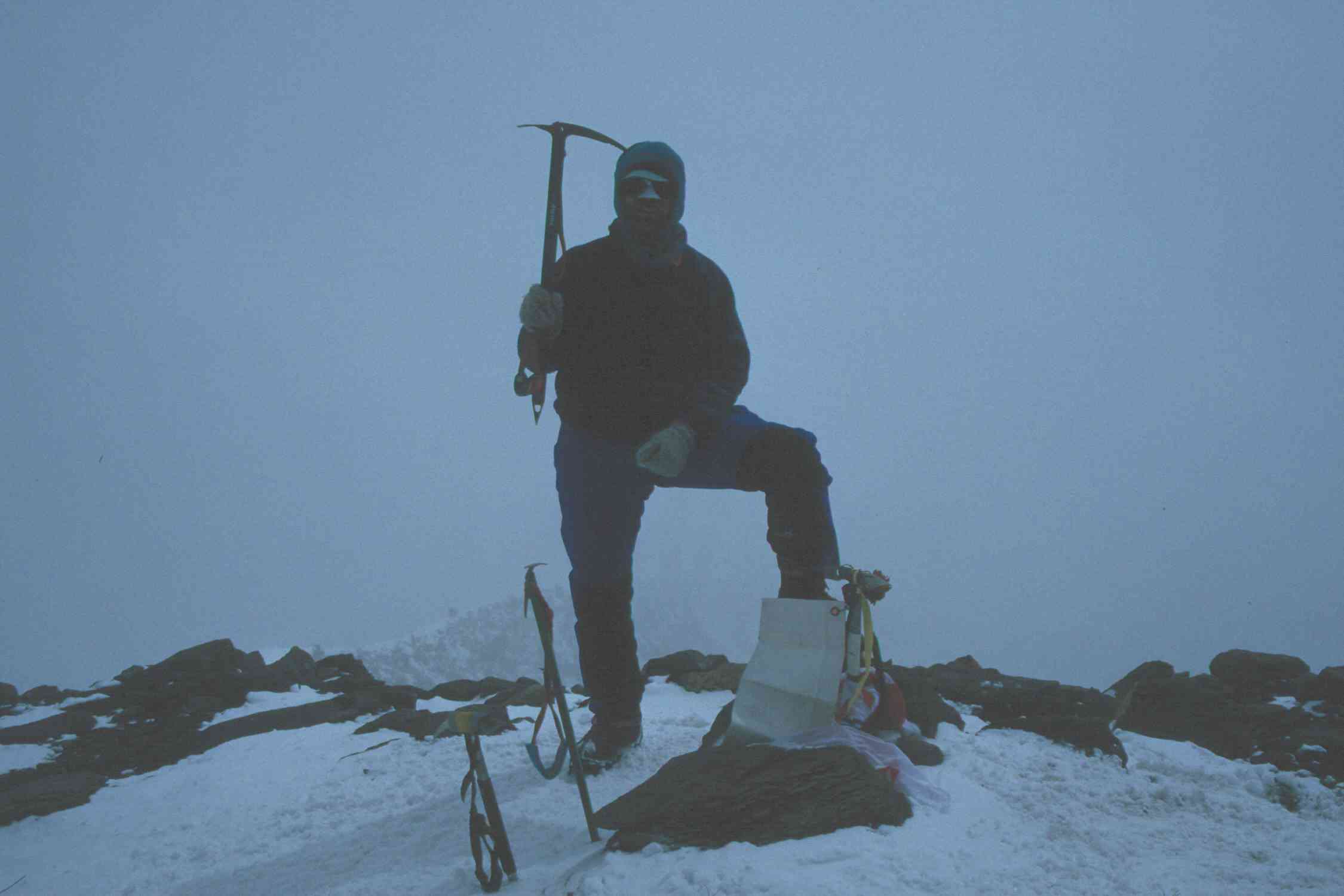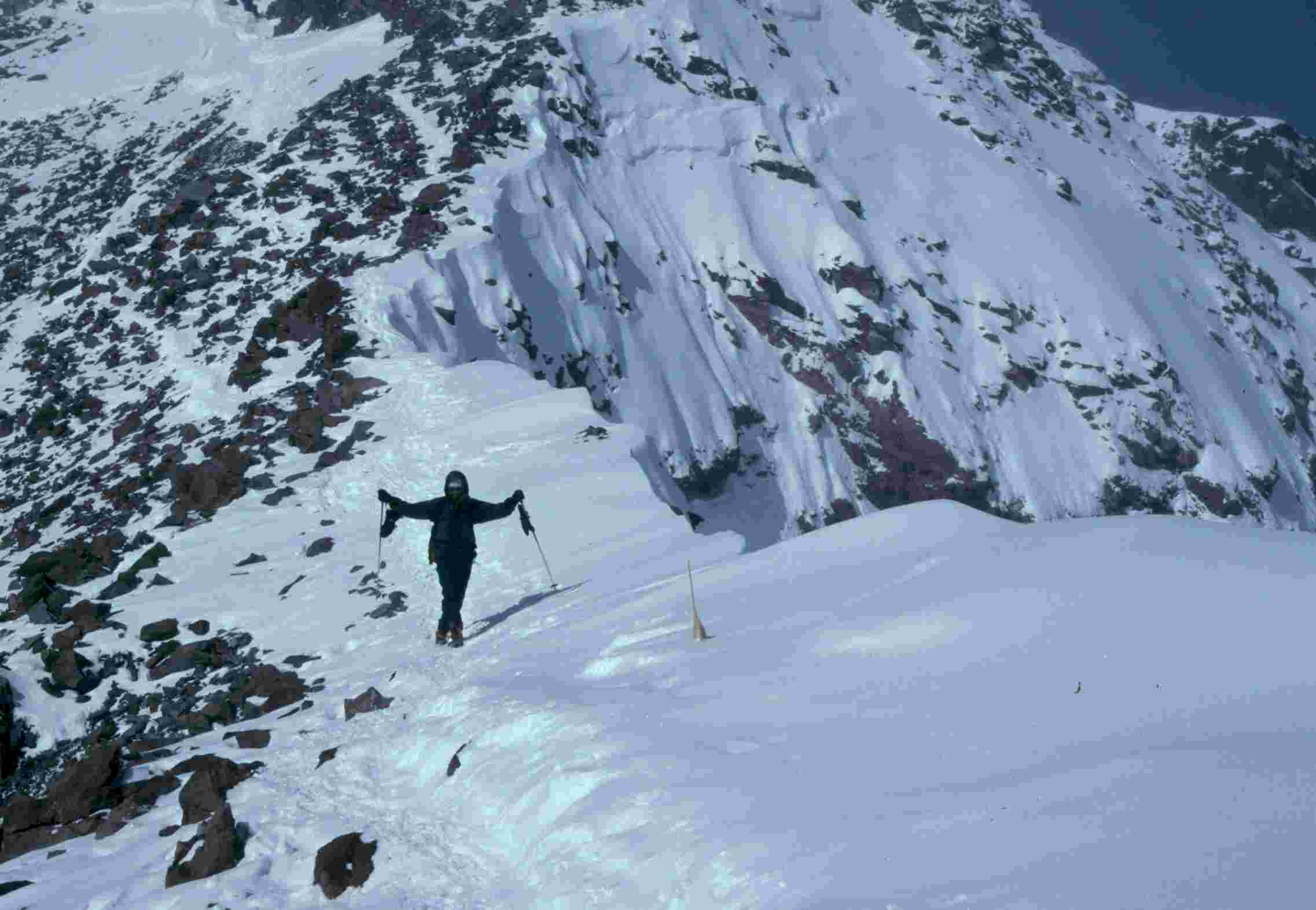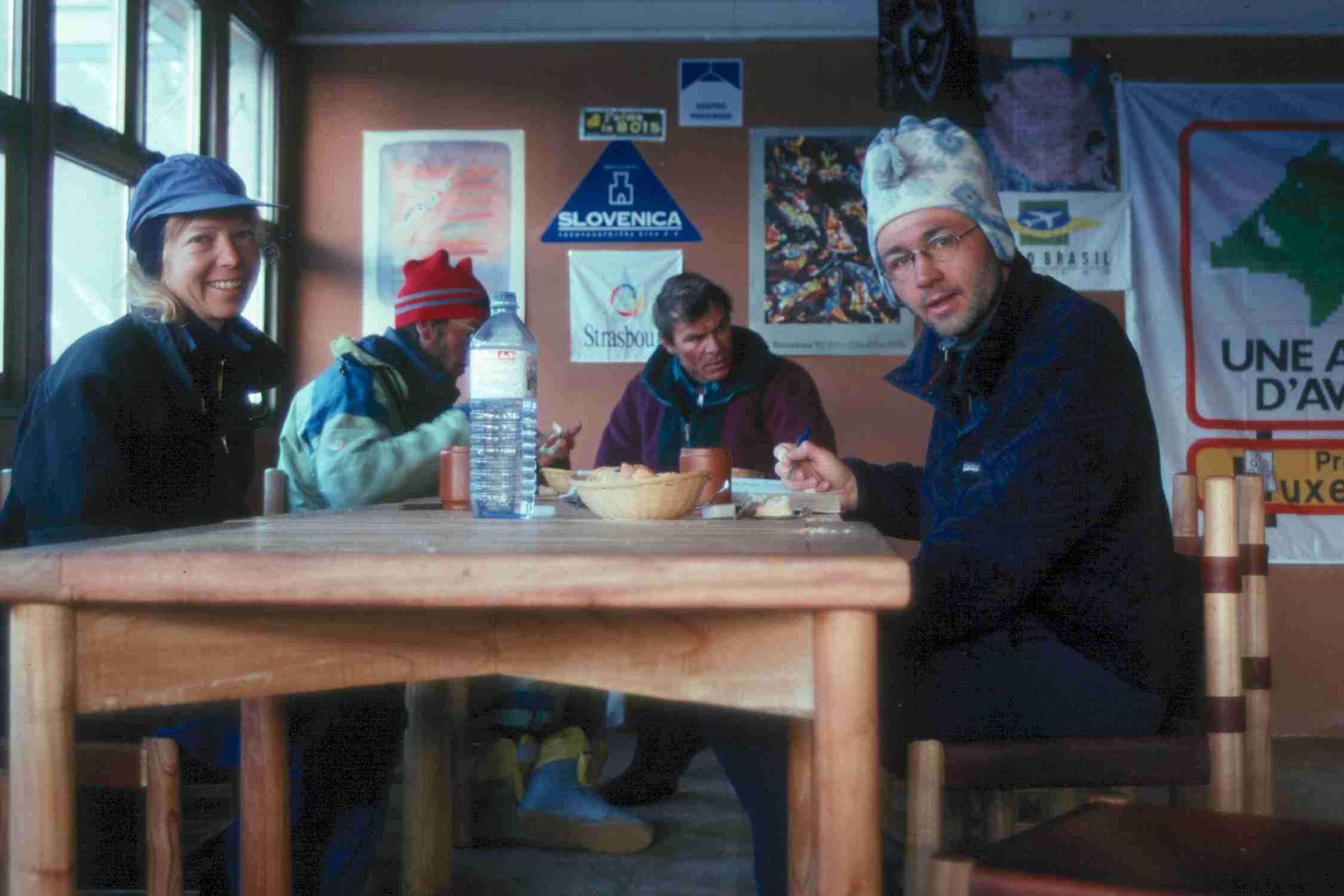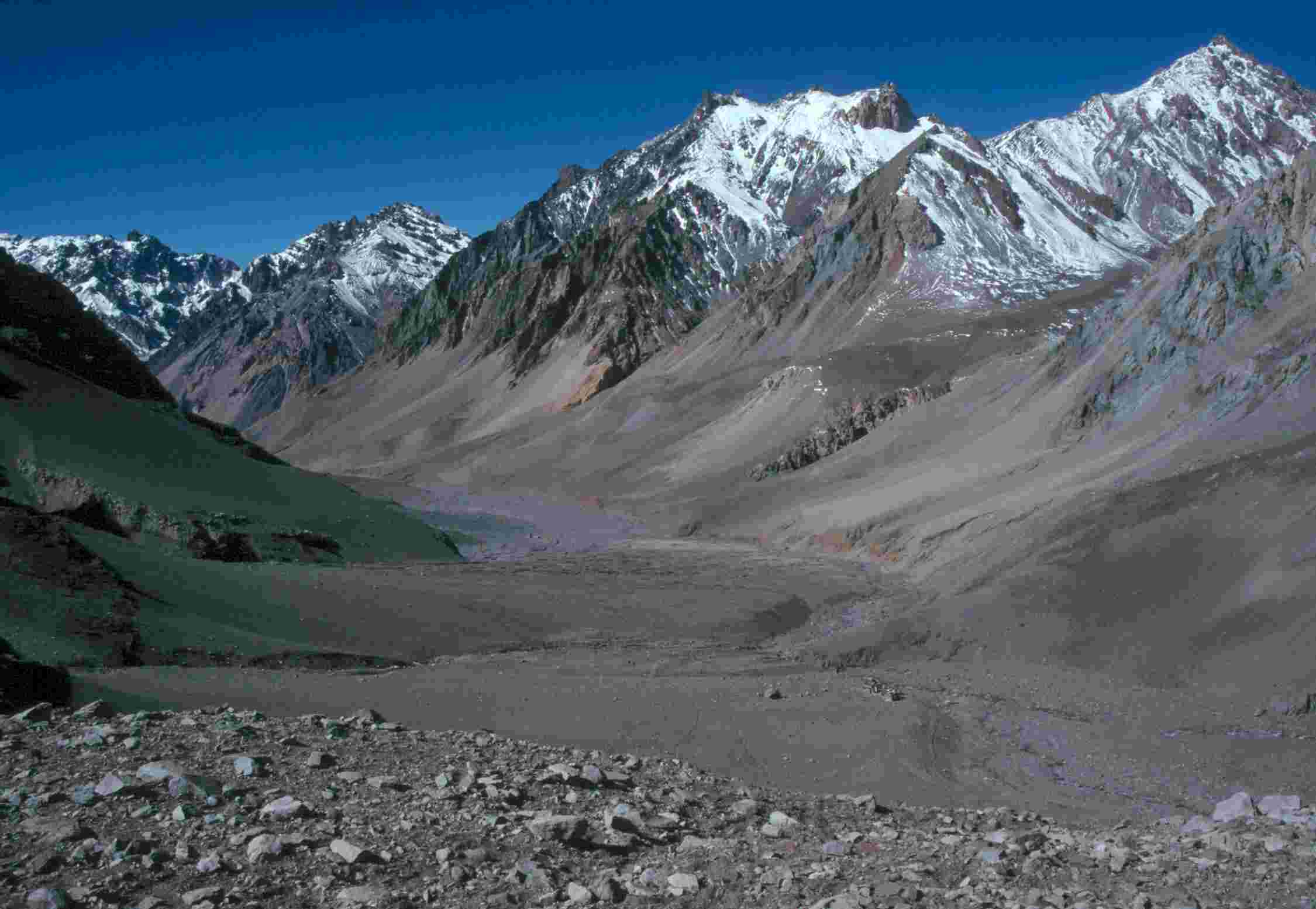


Aconcagua was my first experience climbing a high mountain. I learned as I went. My friend, Pete Squires was experienced at this; he had climbed Denali in 1992 (among other adventures). He took me to the gear store and said… "You need this, and this, and this….". $2000 later I was geared up and ready. This was January 1996. Today I use all the same gear (I guess I’ve added, traded out, and upgraded some things). If you are curious to know what that might be, go to Packing Lists – Expedition. Pete and I were the only two to go (more about Pete in Tribute to Pete Squires) so we chose the standard route – one without crevasses. To get to the base, first we flew to Santiago, Chile, and from there to Mendoza, Argentina. In Mendoza you can get white gas (called bencina blanca) and maybe other items you need. After Mendoza there seems to be a lot of buying and selling at bus stops and on the mountain…. After our climb, Pete sold his crampons right on the mountain slope (still at snow level) for $100 cash (to one of the many who are unprepared!) Others approached us after the climb to sell them anything for just about any price because their gear didn’t arrive. (I learned from Pete to wear my plastic boots on the plane!) From Mendoza we bussed to Puente del Inca at 9000 ft. Right off the bus we were approached by Christina. She, with her husband ran mules to and from the Hotel Refugio near the Plaza de Mulas (base camp). It is a two day walk to base camp, and your heavy high mountain gear can be there waiting for you when you get there. Waiting instead of arranging for mules in advance turned out to save us $150. It was $150 for a mule to take our stuff up and then back again when we were ready to come back. Others paid $150 for one way. Our stuff was waiting at the hotel (the good-news-bad-news hotel) Good because we met people there that made the trip so much better. Good because the food was exceptional. Good because our gear was safe. Bad because it was so cold we actually camped outside the hotel. Bad because every time we climbed any distance up the mountain we first had to traverse an extra ˝ mile of up and down at 14,300 ft. (The good outweighed the bad by far.) So, we walked the first day about 9.5 miles to a spot about a mile above Confluencia – a desolately beautiful walk to about 12,000 ft. Second day was more of the same – 11.5 miles, more beautiful desolation up a long valley which gains elevation slowly until the last (when you are most exhausted) 1.5 miles which gains 1500 ft. Our second day turned into an epic walk. Almost right away it began to snow and soon became a relentless blizzard. We walked into a cold wind and snow for 12 hours. I could see the lights of the hotel as we approached it from a mile away – a beacon of hope for rest and hot tea. But just as we crested the final hill (exhausted) the lights went out! That took the last bit of perseverance right out of me. By the time we got into the totally dark and very cold building, I sat and cried (a true mountaineer!). Well, like I mentioned before, aside from being cold, the hotel experience was a good one.
Here we met Daniel – from Switzerland. Daniel could make friends with everyone! He knew 5 different languages. I wasn’t sure what language he thought in. His parents spoke German, his siblings spoke French. He would speak to Manuel, the hotel manager, in Spanish, turn to his left, speak French, turn to his right and speak English to us – all within a minute. (Very useful skill to have traveling internationally!) Daniel joined us for the climb. We stayed 5 nights at the hotel (outside in a tent), and each day we’d hike up the mountain 1000-3000 ft. We could slog up the trail for 5 hours and turn around and be down in one! Very strange. We finally carried a cache of gear we would use higher up and left it at 17,500 ft. Then for the final push – First we climbed to Nido de Condores at about 18,000 ft. From about 15,000 ft. up it was a snow climb. Nido de Condores is a large flat area which offers spectacular views of the valley and of the summit. Next day we went to White Rocks above Camp Berlin at 19,600 ft. It’s hard to sleep here. It’s hard to do anything here. I had a headache most of the time, and it was hard to stomach any food. I’d be curious to know how I’d feel if I had known about Altitude Adjustment at the time.
Next day was the summit push. The summit is 22,841 ft. (6962 meters). It was 0 degrees in the tent in the morning. We tried to heat water and eat before we left, but we should have heated the water the night before and kept it in our thermos’ and not spent the time in the morning. We started out too cold. Almost right away Pete had to stop and pull his feet out of his boots to unfreeze them. The three of us moved at about the same rate for awhile. We passed the Refugio Independencia and up over the Cresta del Viento (Windy Crest) and started the long traverse to the Canaleta (a steep rocky chute which I never got to). The weather was intermittently snowing and clear. Pete was picking up speed – a special turbo feature he had as he approached the top of a mountain when most people were slowing down. I was feeling dizzy and exhausted and decided to stop and turn back. My altimeter watch read 21,600 ft. It seemed like the right decision at the time – I look back now and wonder. I wish I had gone to the top. At this point Pete and Daniel made an agreement "In one hour we’ll talk; if the weather is like this, we’ll turn around." Sounds good, but there was no such conversation. Pete’s turbo got him to the summit in 2 hours. Daniel was there in three. Pete was the highest point in the Western Hemisphere for 1 hour on Jan. 19, 1996. They came down and we stayed again at the high camp. The next day we went all the way down to the base with very heavy packs through a foot or two of fresh snow. And then… enjoyed another wonderful meal prepared by Manuel at the hotel.
We sent most of our gear down with the mules and rested a day – savoring the beauty and high altitude and for Pete, the well deserved summit success. The next day we walked all 21 miles out to Puente del Inca. That is where Pete got top price for his totally stinky long underwear, and I sold my ice axe and crampons. Climbing a mountain like Aconcagua is hard work and a test of perseverance, especially when the weather is bad. But it becomes a part of you and you must have more. At least that’s the way it was for me. When I climbed Elbrus 3 ˝ years later I thought that would be my last high mountain. By the time I reached the base I was dreaming of what might be next. So, I’ve learned to ignore those silly ideas that I might be done climbing high mountains!
|
||||||||||||||||||||||||||||||||||||||
|
|
||||||||||||||||||||||||||||||||||||||
